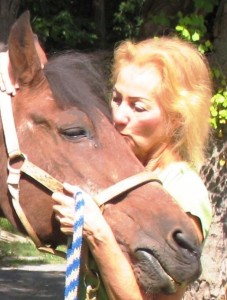President’s Message:
The Suffering of Feral Cats

I think that one of the greatest problems those of us involved in animal protection must contend with is stray cats and “feral cat colonies.”
In my experience, the vast majority of stray cats — including those who live in feral cat colonies where feeders provide food — have marginal lives at best. For a few months or even years, some may manage to exist reasonably well by hunting or on handouts from humans. Sooner or later, though, if they are not killed outright, they become ill or injured, often severely so. Then, lacking the veterinary attention owned companion animals would receive, they experience horrible suffering and misery.
We should keep in mind that cats are domesticated animals. Not only have they been living with man for about 5,000 years, they are also a product of selective breeding. Over time, we have actually bred out of them the desire and ability to adapt well as wild animals. Even if they are born in an alley or a field, they are not wild; they are simply domesticated animals living without proper care.
I have been a wildlife rehabilitator for 13 years, and my property is located next to 400 acres of wooded land. I have cared for many different orphaned wild animals, such as raccoons, opossums, foxes, and deer. When they no longer need any care, they are released as the wild animals that they are because they have what it takes to survive.
Feral cats on the other hand do not have what it takes; they usually live in close proximity to people, and it is very difficult for them to survive otherwise. When people feed them, wild animals are also attracted to the food source, and often fights break out over food and territory. Not only can a raccoon or fox rip a cat to shreds, the cats also can often become injured by fighting each other.
By definition, feral cat colonies are cats living in packs, and cats are not “pack” animals. They are descended from wild animals that stalked alone. (The only member of the cat family that lives in a “pack” is the lion.) Cats living in packs undergo great stress, which can lead to a breakdown in their immune system, thus making the animals more vulnerable to illness and injury.
We must also consider the damage and suffering that free-roaming cats inflict upon wild animals. In my work as a wildlife rehabilitator, the majority of phone calls I receive deal with song birds, squirrels, rabbits, and other small animals that have been injured by cats. This is not simply nature taking its course; it is not “natural” to have an overpopulation of cats disturbing the ecosystem.
For three years, I volunteered as a certified euthanasia technician at a humane society in upstate New York. We frequently received feral cats that had been humanely trapped. The majority of these cats were infested with parasites, had severe upper respiratory infections, and were almost always suffering from abscesses on their heads or legs.
As a police officer, I have either seen or been made aware of cases where cats were stuffed in mail boxes, fried in microwave ovens, burned alive, skinned alive, or stomped to death in bags. Disturbed people do these things to cats for “fun.”
I have three cats; two have lived with me for fourteen years, and they all mean more to me than I can begin to describe. If something were to happen where I could no longer care for them, I would rather euthanize them myself than let them take their chances on the street.
When an animal shelter refuses to take in stray cats, potential suffering is being ignored. Leaving domesticated animals to fend for themselves can lead to terrible cruelty, and those involved in animal protection have no more important mission than preventing cruelty to animals.
Susan C. McDonough
President
New York State Humane Association Humane Review, Vol.XIII, No.2, Summer 1999.